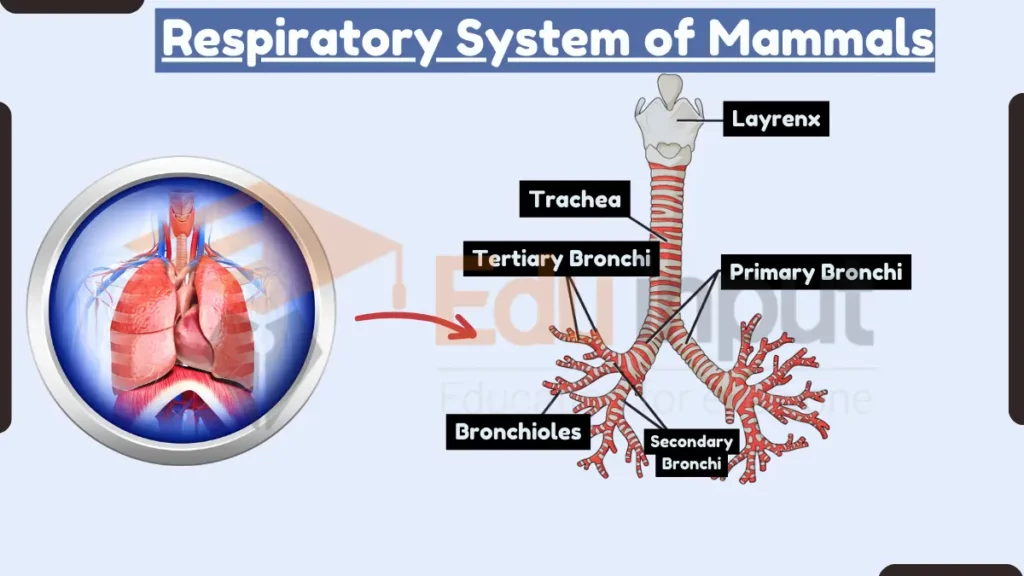Respiratory System of Mammals – Organs, Adaptations, and Operating Mechanism
The respiratory system of mammals facilitates gas exchange to provide oxygen for cellular metabolism. It includes organs of the upper respiratory tract, conducting zone, and respiratory zone that work together to bring air into and out of the lungs.

Also read about Gustation in Mammals/Taste Bud
Respiratory Organs of Mammals
Here are a few organs that are involved in respiration in mammals:
1. Nasal Cavity
The nasal cavity is the first organ of the respiratory system. It is lined with a mucous membrane that helps to warm, humidify, and filter the air. The nasal cavity also contains specialized cells that detect odors.
2. Pharynx
The pharynx is a muscular tube that connects the nasal cavity and oral cavity to the larynx. It serves as a passageway for both air and food.
3. Larynx
The larynx is also known as the voice box. It contains vocal cords that vibrate to produce sound. The larynx also helps to prevent food and liquid from entering the trachea during swallowing.
4. Trachea
The trachea is a windpipe that connects the larynx to the bronchi. It is lined with a mucous membrane that helps to trap dust and other particles in the air.
5. Bronchi
The bronchi are two tubes that branch off of the trachea and enter each lung. They continue dividing into smaller and smaller passages called bronchioles.
6. Bronchioles
Bronchioles are tiny airways that lead to the alveoli. They are lined with cilia, which are hair-like structures that help to move mucus and other particles out of the lungs.
7. Alveoli
The alveoli are tiny air sacs located at the end of the bronchioles. They are surrounded by a network of capillaries, which allow oxygen to diffuse into the blood and carbon dioxide to diffuse out of the blood.
Adaptations in mammal’s respiratory system
Mammals have a number of adaptations in their respiratory system that allow them to breathe efficiently on land. These adaptations include:
- Diaphragm for efficient ventilation
- Alveoli with large surface area for gas exchange
- Unidirectional flow of air for maximal oxygen uptake
- Rib cage and intercostal muscles for increased thoracic volume
- Trachea and bronchi reinforced with cartilage to stay open
- Cilia and mucus to trap and remove dust and other particles
How the Respiratory System of Mammals Works?
Here is pathway of Mammal’s respiratory system:
Inhalation
- Diaphragm and intercostal muscles contract, increasing chest volume and decreasing air pressure.
- Air rushes into the lungs.
- In the alveoli, oxygen diffuses from air into blood while carbon dioxide diffuses from blood into air.
Exhalation
- Diaphragm and intercostal muscles relax, decreasing chest volume and increasing air pressure.
- Air is forced out of the lungs.
Also Read:



Leave a Reply